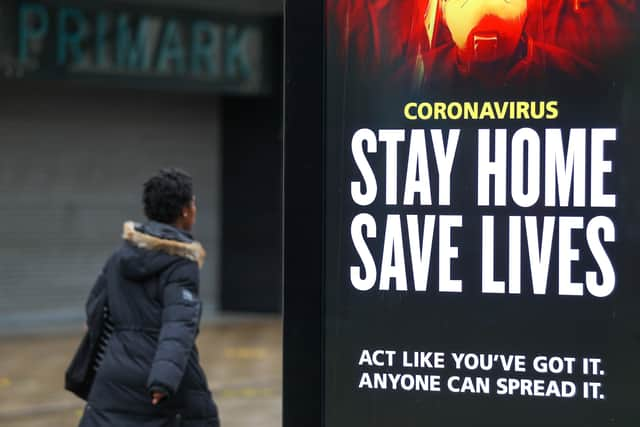How are you? Crucial question the census doesn’t ask – David Behrens


But the most important question right now is nowhere on the form. It is simply this: how are you feeling? How well-adjusted are you?
It’s too profound to be answered just by ticking a box, yet after exactly a year of on-off lockdowns, the responses would tell us more about our collective condition than all the other data put together.
Advertisement
Hide AdAdvertisement
Hide AdIt is unsurprising that the nation’s wellbeing should have fallen below the radar of the census takers, because that has been pretty much the story of the last 12 months. Despite warnings from charities, the Government’s one-note message of protecting the NHS above all else has scarcely altered.


This week, it stepped up the rhetoric with the release of its half-hour “documentary” hailing the success of the country’s vaccine rollout. The cost of its production would have paid for another vaccination centre or two.
The rollout is indeed a success, but that’s not the point. The light at the end of the tunnel should be a time for reflecting on the human toll of misery and hardship that our sacrifices have created – not for back-slapping.
Advertisement
Hide AdAdvertisement
Hide AdDowning Street’s recourse to propaganda films to make a point is a throwback to the wartime Ministry of Information, the MoI. But the familiar, hectoring commentary of those “keep calm and carry on” featurettes belied a nuanced and wide-ranging narrative. Euphemisms like wellness weren’t in the dictionary so they called it morale – and they knew how important it was.
Even before the start of hostilities, a concerted effort was made to keep the public on side, for everyone knew that confidence among the troops would suffer if their loved ones back home lost faith that the war would be won.
The desire to understand the mood on the home front went far beyond the stream of footage released to cinemas. The MoI commissioned social surveys and “home intelligence reports” to get a granular picture of everyday privations, and the degree of resentment at having to accommodate them.
From these mini-censuses, Ministers could glean much about the dissension that was fermenting below the surface, and take steps to address it. In June 1940, for instance, they learned that miners in South Yorkshire were demanding better protection against fifth columnists, and that in Leeds, non-war workers were angry at being denied paid holidays. “Soldiers get leave – why not us?” they demanded.
Advertisement
Hide AdAdvertisement
Hide AdThe war years also saw the non-governmental Mass Observation Project, which recruited volunteers to record the voice of ordinary people, and which sometimes influenced public policy. When in 1939 it criticised the tone of an MoI poster campaign, the offending artwork was removed.
None of this was revealed at the time, for the findings would have damaged the image of a nation unified by a common cause. But the coalition government had at least made an effort to listen. Can we say the same today?
The absence of wartime censorship has made daily headlines of the current dissent. Among the most concerning is that nearly a third of parents believe it will take a year or more for their children to recover their lost learning.
Advertisement
Hide AdAdvertisement
Hide AdThat is a monumental consequence for an entire generation of young people whose future has been effectively de-prioritised.
The cost of this and all the other examples – great and small – of having skipped a year of normal life will have to be weighed against the warning that there will be a further wave of Covid infections in the autumn. It came from Professor Sir Ian Diamond who, as head of the Office for National Statistics, is the country’s most senior census taker. “This is a virus that isn’t going to go away,” he said.
He’s right: Covid will be a facet of the New Normal that we will have to take in our stride, in the same way as the winter flu. And that’s why, as we tick the gender boxes on our forms tomorrow and ponder the questions that are really important to us, it would have been helpful for the Government to gain an understanding of how many precautionary measures our sanity can stand next time around.
Advertisement
Hide AdAdvertisement
Hide AdSupport The Yorkshire Post and become a subscriber today. Your subscription will help us to continue to bring quality news to the people of Yorkshire. In return, you’ll see fewer ads on site, get free access to our app and receive exclusive members-only offers. Click here to subscribe.
Comment Guidelines
National World encourages reader discussion on our stories. User feedback, insights and back-and-forth exchanges add a rich layer of context to reporting. Please review our Community Guidelines before commenting.